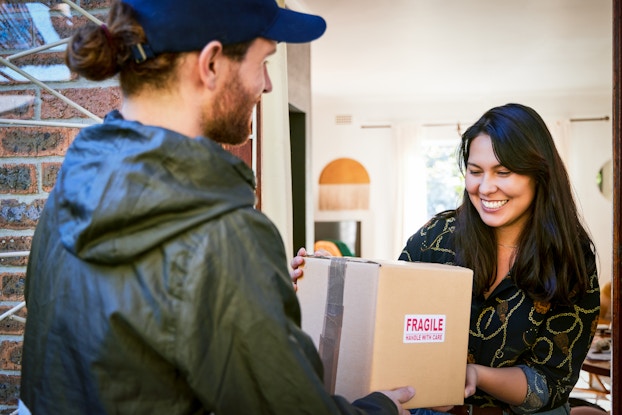
Customers today expect businesses — not just restaurants — to offer fast, convenient delivery. Third-party apps like Postmates and Uber Eats facilitate this service, but many take a big cut from the business’s sales in the process. As a result, some business owners are exploring the option of offering delivery without relying on a partner to do the work.
If you’re considering offering delivery, here’s what it involves and how to decide whether setting up your own delivery service is worth the investment.
Determine your delivery area
Start by deciding the central point from which your delivery drivers will be picking up orders to bring them to customers. This is an easy decision if you have one storefront, but it could take some testing if you operate more than one location.


Once you have your location, set a radius limiting how far you’re willing to travel to drop off a package. It doesn’t make sense, logistically and financially, to deliver to customers past a certain distance.
“To cut down fuel costs, vehicle wear and tear, and frustrations around traffic, you’re better off limiting local delivery to customers within 20 miles of your shop,” wrote ShipperHQ.
Set some other parameters
Offering delivery can get expensive, so you may want to set some limitations on what a customer can get personally couriered to their door. For instance, you may require customers to spend above a certain dollar threshold to qualify for local delivery. Or, you may restrict what products are eligible for delivery.
“For those that own a specialized shop, say one that sells sports equipment, again, it probably doesn’t make sense to offer local delivery for someone who orders a couple of t-shirts,” wrote ShipperHQ. “Instead, limit it to specific items with higher margins or heavy products like a dumbbell set.”
When you determine these parameters, weigh up the cost of gas, the hourly rate you’ll pay a team member to make these trips, and the cost of priority shipping through a logistics partner like FedEx or UPS. These data points can help you assess when to offer local delivery.
To cut down fuel costs, vehicle wear and tear, and frustrations around traffic, you’re better off limiting local delivery to customers within 20 miles of your shop.
ShipperHQ
Dive into the logistics
Delivery seems straightforward enough: Just move a product from point A to point B, right? In reality, there are a lot of moving parts to make sure this simple transaction goes off without a hitch. Here are some elements you’ll need to consider:
- What mode of transportation will you use? While a car or van may be the first thing to come to mind, you could also use bikes or deliver on foot, if your radius is limited to within your neighborhood. Or, if you’re in a city, maybe you can use public transportation.
- What packaging will you offer? If you’re already shipping orders, it’s possible you can just use the same packaging. But it also might make life easier to find packaging with handles or lightweight materials that someone can carry.
- When will delivery be available? “One of the benefits of local delivery is that customers can receive their orders more quickly. But this depends on how often you plan to go out on delivery,” wrote Shopify. “If you’re delivering locally and can’t do it every day or as orders come in, define specific delivery days or times.”
- Who will make the delivery? Do you have enough staff to spare someone heading out regularly to drop off orders, or will you need to add head count? Do you have someone who can package orders and coordinate drivers?
If you are still a one-person show, you may want to explore adding a third-party delivery platform to connect you with independent delivery couriers and help find potential customers.
[Read more: How to Partner With a Third-Party Delivery Service]
Implement the right technology
As you think through the details, don’t forget one important consideration — how will you get paid? Online stores commonly charge for delivery at checkout, but you could also accept cash on delivery. You should also prepare to level up your inventory management if you decide to offer local delivery.
“Data [shows] that online shoppers spend 23% more and have a 25% higher cart size when convenient ordering options like local pickup and local delivery are offered by independent retailers,” reported Shopify.
For some businesses, it could mean giving delivery persons a portable card reader, such as Clover Flex or the Square Reader. Find a solution that allows your customers to tip their delivery drivers to keep everyone satisfied.
[Read more: What Is Cash on Delivery and How Does It Work?]
CO— aims to bring you inspiration from leading respected experts. However, before making any business decision, you should consult a professional who can advise you based on your individual situation.
CO—is committed to helping you start, run and grow your small business. Learn more about the benefits of small business membership in the U.S. Chamber of Commerce, here.







